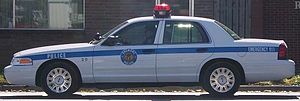He loves me? He loves me not?
Surely your intrepid heroine knows better than to rely on the petals of the daisy to tell her the truth - the answer to her question is standing right in front of her.
Bodies rarely lie.
Your heroine looks beyond the words and judges whether this is a future love interest or this is a waste of her time.
The first rule of thumb is never assume. Making a determination is based on an accumulation of body language information. Some of the body language gestures that your heroine is looking for may be personality quirks that do NOT inform the communication. As an example, I have often been called out for playing with my hair - many a man has read that a woman touching her hair is a sign of sexual desire. And I'm not saying that this is incorrect in every instance of my playing with my hair - I'm just saying that in general my hair gets in my way, and I am constantly touching my hair. So this would not be a good "tell" for me. What you want your heroine to see is what changes, where does the character act differently.
A tell is a body language signal that is produced without thought. It signals information to a recipient. Some people are more dexterous in reading body language than others.
Flirtation -
| (Photo credit: Wikipedia) |
flirtation/courtship dance.
* Men pick up on the woman's body language
and act. This is true unless a man has ulterior
motives ex. he is looking for prey - if this is
the motivation, then the man is looking for
victim-body language which is a different
topic.
* Woman will spot a male that peaks her
interest and watches him, holds eye contact
a millisecond longer than is normal.
* She will flick her hair to help ensure that his
eye perceives her.
* Once a man is aware of a woman, if he is
interested, he will wait for an approach tell.
This is the signal that he is welcome to make contact with the
woman. If she does not offer an approach
tell to him, he will get no where if he tries to advance.
What might this look like? She will:
* Catch his eye* Smile
* Preen
* And possibly lift her chest.
| (Photo credit: Wikipedia) |
Once he has approached
Signs things are going well -
* Think open - open eyes, open mouth, open gestures...Video Quick Study (2:44)
* Smiles (wrinkles below the eyes and at the outer corners shows
genuine smiling)
* Laughter
* Exposing the neck - a submissive flirtatious gesture
* Touching below the belt - thigh, bottom...
* Orienting the bodies towards each other - ignoring everyone else.
Video Quick Study (2:03)
* Exaggerated facial expressions
* She leans towards you
* Mirrors your body language
* Flutters eyelids. This can also be a smokey room, an allergy,
something in her eye...careful about jumping
to conclusions - look for layers of tells not just one.
* If she crosses her leg, she will point it in a direction that will close the circle excluding others
Video Quick Study (2:48)
Video Quick Study (1:15)
Signs things are going badly -
* Crossing the legs or arms, especially for men doing the dreaded4 cross (an ankle across the knee) which
effectively puts a bar between the two people.
* Belly buttons or feet facing away from the direction of the other
conversant
* Controlled facial expressions
* Looking away
* A pat - is a release signal (different than a touch - this is a pat,
pat, let go)
And going really badly -
* Tucking the chin as if to take a blow* Swiping the tongue over the teeth - teeth being a primal defense
weapon
So what's a girl to do to try to gain his amorous attention? She pulls out the big guns
* A woman will increase her preening and animation in order tohold the man's attention
* Head cants (tilt)
* Eye-pops - closing the eye for longer than a blink then opening
the eye widely, fixing the man in her focus.
* Lip licks
* Hair flips and preening
Micro expressions
* Are universal - they are the same everywhere in the world nomatter the educational level, gender, age, etc.
* Take place in less than 1/5 of a second.
* Unconscious and cannot be controlled
* Express the seven universal emotions:
`anger
`fear
`disgust - lines in the nose, lines under the eyes, contorting lips -
doomesday for romance
`contempt - number one sign of a failing relationship. Asymetrical
smile.
Video Quick Study
`surprise
`sadness
`joy
If either contempt or disgust are seen in the micro-expressions, it's over, walk away (unless these feelings are directed to a story line instead of the person, of course).
Here's hoping your heroine falls for a fabulous guy! I wish them all the best as they move through your plots twists toward their happily ever after. Sigh.
Video Study (14:38) a little long but you can see all of these tells in action with helpful commentary



















